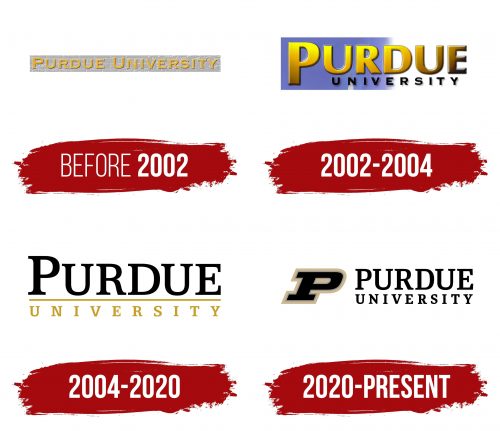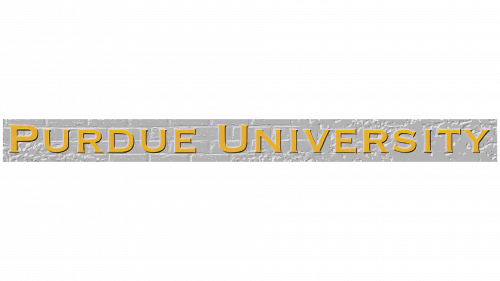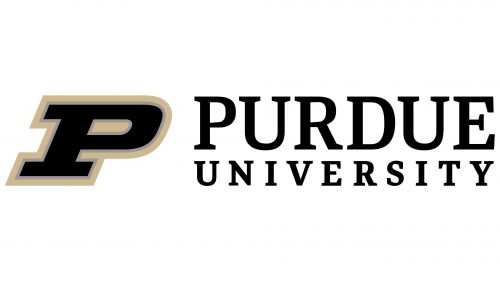The Purdue University logo embodies the unity and strength of the university community. The symbol represents the drive for new accomplishments and achievements, reflecting the university’s forward-looking focus. The emblem, aimed at the younger generation, considers its tastes and interests, emphasizing modern trends and innovations.
Purdue University: Brand overview
Purdue University’s history officially began when the Indiana General Assembly passed a statute in 1869 to create a new university focusing on agriculture and the mechanical arts. The university’s name honors John Purdue, a prosperous businessman and philanthropist who contributed $150,000 and 100 acres of property to establish the university.
The institution held its inaugural classes on September 16, 1874. Six academic members and just 39 students were enrolled in its first year of operation. Richard Owen was the university’s first president.
Early on, the institution had to deal with many issues, such as poor enrollment and financial difficulties. Nevertheless, the university overcame these challenges because of the leadership team’s work and the community’s support.
The school saw substantial expansion in the 1880s. The establishment of the first engineering school in 1883 significantly increased the academic offerings.
An important step toward gender equality in education was taken in 1891 when the first female students graduated.
There was more expansion in the early 20th century. The School of Pharmacy opened its doors in 1902, and the School of Education followed in 1905.
Research advanced significantly in the 1920s and 1930s. The School of Aeronautics, established in 1934, played a significant role in the growth of the aviation and aerospace industries in the United States.
World War II significantly impacted the institution. Many academics and staff left for the front, and part of the campus was converted for military use. The G.I. Bill allowed the university to see a notable spike in student enrollment following the war.
The campus and educational offerings saw substantial growth in the 1950s and 1960s. The network of regional campuses was first created in 1961 when a regional campus was founded in Fort Wayne.
A 1969 graduate, Neil Armstrong became the first person to set foot on the moon, an event that profoundly impacted the institution. This incident cemented the school’s standing as a top space science and aeronautics university.
The institution kept expanding its research initiatives in the 1970s and 1980s. 1978, the Cancer Research Center was founded, among other new research centers and institutes.
Major investments were made in the university’s infrastructure during the 1990s. The construction of new academic buildings and research labs increased the school’s capacity for science and education.
Indiana University-Purdue University Indianapolis (IUPUI) and other regional schools were established in 2001 when the institution merged its regional campuses with the regional campuses of Indiana University.
International cooperation and the advancement of research activities were the defining features of the 2000s and 2010s. The institution enhanced its standing as one of the top research universities in the country, particularly in the domains of agriculture, technology, and engineering.
When Mitch Daniels became the 12th president in 2012, he initiated several changes to improve managerial effectiveness and accessibility to education.
The Purdue Moves initiative was started in 2013 to improve research capacity and change how students learn.
A tuition freeze, which is still in place, was announced in 2014, bringing down the cost of education for students.
The Bechtel Innovation Design Center opened its doors in 2015, greatly increasing engineering research and education opportunities.
The Purdue Polytechnic High Schools program was introduced in 2016 to prepare high school students for admission to STEM programs in higher education.
The acquisition of Kaplan University, which resulted in the establishment of Purdue University Global, an online university for adult learners, made 2017 noteworthy.
The Wilmeth Active Learning Center, which debuted in 2018, offers a cutting-edge location that blends active learning classrooms with a library.
The Purdue Next Moves program, introduced in 2019, continues the university’s development plan in strategic areas.
In 2020, the institution successfully adjusted to new circumstances by growing its capacity for remote learning despite global concerns.
The College of Veterinary Medicine celebrated the completion of a new facility in 2021, solidifying the university’s leadership in veterinary research and education.
To enhance its leadership in this area, the institution launched a massive district development project in the aerospace industry for 2022.
A new quantum computing program, which included building a new research center, was started in 2023.
During this time, the university maintained its strong standing in national and worldwide rankings, particularly in engineering, technology, and agricultural sciences.
Additionally, the institution strengthened its relations with other countries by forging new alliances and raising the quantity of student exchange programs.
Many notable people have graduated from the university, including 23 astronauts, Nobel Prize winners, well-known politicians, and prominent businesspeople.
Meaning and History
What is Purdue University?
The university is located in West Lafayette, Indiana, and is a renowned public research-grant university. It is known for its emphasis on science, technology, engineering, and mathematics (STEM) and offers various undergraduate and graduate programs. The university is particularly known for its engineering, agriculture, and aviation departments, regularly ranked among the best in these fields. The campus is home to state-of-the-art research centers and laboratories, demonstrating the university’s commitment to discovery. Several astronauts are alumni of the university, which is renowned for its contributions to space exploration. The university creates a vibrant academic community with a diverse student body and international faculty. With strong ties to industry, students can take advantage of excellent internship and employment opportunities. The University also has a long history of success in athletics, especially basketball, which complements the vibrant campus life and strong sense of school pride.
Before 2002
The main element of the first logo is an old brick wall, symbolizing the university’s strength, reliability, and durability. These bricks hint at the famous Heavilon Hall, one of the oldest buildings on campus. Despite a fire, it was restored and symbolized resilience and revival.
Against the backdrop of the brick wall is the university’s name, rendered in a bold yellow font with white and black sides. The yellow color symbolizes optimism, energy, and the pursuit of knowledge. The black and white sides of the letters add depth and dimension, emphasizing the university’s significance and status.
The name “Purdue” was taken from John Purdue, a benefactor who donated land and funds for the university’s construction. The emblem reflects the institution’s historical legacy and strength, expressing gratitude to those who contributed significantly to its development. The wall, symbolizing Heavilon Hall, represents resilience and the pursuit of achieving set goals, which forms the foundation of the university’s philosophy.
2002 – 2004
The logo highlights the connection to the university’s achievements and aspirations. The emblem’s background is a gradient from blue sky to white, symbolizing the transition from earth to sky, representing the pursuit of knowledge and success. Against the blue background, the top of a building can be seen, representing The Purdue Bell Tower—one of the university’s symbols often associated with its history and traditions.
The university’s name is written in large golden letters, emphasizing its importance and status. The gold color is associated with success, wealth, and prestige, and the font itself is bold and three-dimensional, conveying the institution’s stability and confidence. The combination of these elements symbolizes the university’s solid foundation and drive for further growth and development, the opening of new branches, and the expansion of infrastructure.
2004 – 2020
The elegant, smooth serif lettering is the new logo of the institution. It reflects the research and educational programs emphasizing the university’s importance as a key center of education in the state. The logo highlights these aspects, showcasing the pursuit of excellence and growth.
Beneath a straight, gleaming line is the golden word “University,” symbolizing the ancient, valuable foundation built on scientific knowledge and achievements upon which the modern university stands. This element underscores the inseparable connection between tradition and innovation, forming a strong foundation for future generations.
2020 – today
The Purdue logo reflects its modern values and pursuit of success. The large letter “P” is at the center, designed in a dynamic, athletic style. It symbolizes the energy and strength of the student community. The letter is outlined by a thin gray and a wide gold border, emphasizing complexity and layering while adding visual depth to the symbol. These lines suggest cohesion and support within the university environment, where everyone feels part of a unified group working toward common goals.
To the right of the letter “P,” the university’s name is written in two levels in black font. The font has calligraphic features, highlighting the importance of tradition and a high level of academic excellence. This design represents the harmonious blend of work, learning, and research, which forms the foundation of the university’s educational process.
The Seal
The modern Purdue University seal incorporates elements borrowed from previous versions of its symbols. The primary circular shape features the university’s name in an artistic, free-flowing font, giving the emblem a classic yet dynamic appearance.
The seal’s central element is a mythical griffin, symbolizing strength and protection. The griffin holds a shield divided into three parts, each representing key areas of the university’s work: service, education, and research. These three components reflect the institution’s core mission, commitment to the comprehensive development of students, and contribution to scientific achievements.









